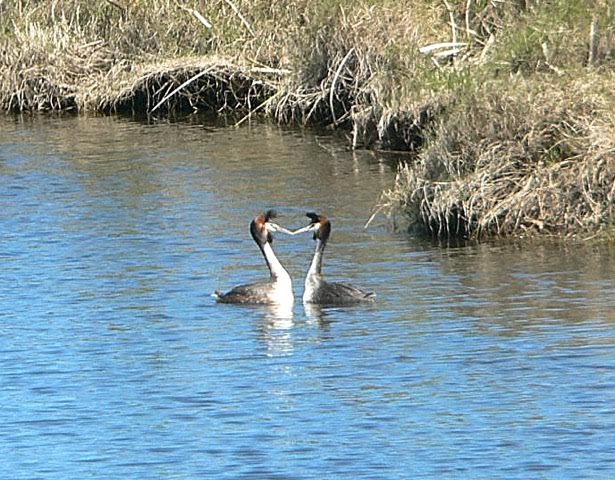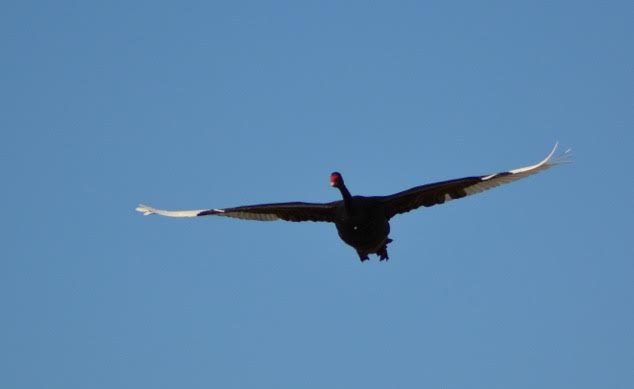|
In September at the Big Swamp look out for the Great Crested Grebe. It's the largest of the Grebes and not especially common in south western wetlands. It has a long white neck with a very distinctive double crest on top of its head and black and chestnut frills on either side. These are more prominent during the breeding season. The rest of the body is brown with white underneath.
Their courtship display has some fascinating behaviour, ripple dives, presentation of weeds, swaying and entwining of necks. In the photo if you look at the space between the necks it resembles a love-heart. ahh. The pair will remain together throughout the year, building a floating nest attached to surrounding reeds. They share incubating duties and caring for the young. You might see the chicks hitching a ride on the back of one of the parents while the other dives to bring them food, insects, tadpoles or weeds. Every so often the parent will eject its load, the chicks tumble into the water swim to the other parent who puts out a foot so they can climb up onto its back. The Great Crested Grebe relies on freshwater wetlands for its breeding habitat so here at the Big Swamp we are providing an ideal environment for these very elegant birds.
0 Comments
Australia has the world’s only, mostly Black Swan, just a red beak and a glimpse of white feather until it fly’s then you see as in the photo the white flight feathers. New Zealand had its own species but it was hunted to extinction, later on the Australian species was introduced and have now become naturalised.
Black swans live throughout Australia wherever there is a large body of water. They feed on aquatic and marshland plants. Breeding is between May and September and the mature pair bond permanently, both of them nest building, incubating and feeding the cygnets. The female lays 4 - 6 eggs in an untidy nest, incubation doesn't start until the last egg is laid. This takes 35 - 40 days and the cygnets stay with the parents for about 9 months. After they have finished breeding Sept - Feb. the adults moult their wing feathers. Unable to fly they gather in large groups on open water, safety in numbers. The Big Swamp is home to a successful breeding pair and they should return to their nest site to breed annually. Black Swans are good parents, calmly and proudly displaying their offspring but seeing them in flight they are at their most spectacular |
ArchivesCategories |
|
Prince Philip Dr, South Bunbury WA 6230
|
Contact UsWe would like to acknowledge the photographs supplied by David Addy, Terri Sharp, Bunbury Museum, Tom Brightwell, Maurice Colley, King Cottage Museum, Carol Strang.
Website by CloudStoke Media
|



 RSS Feed
RSS Feed